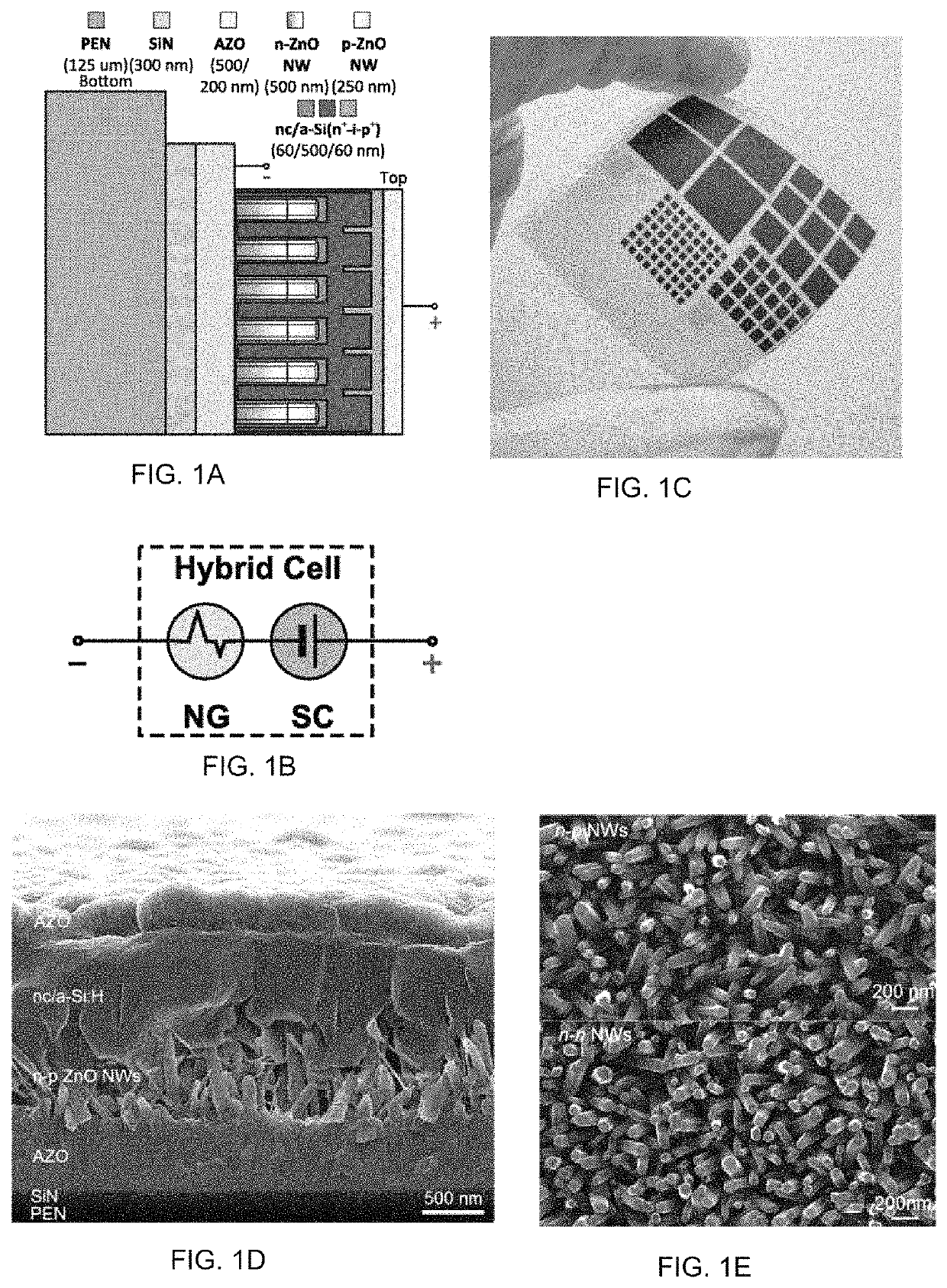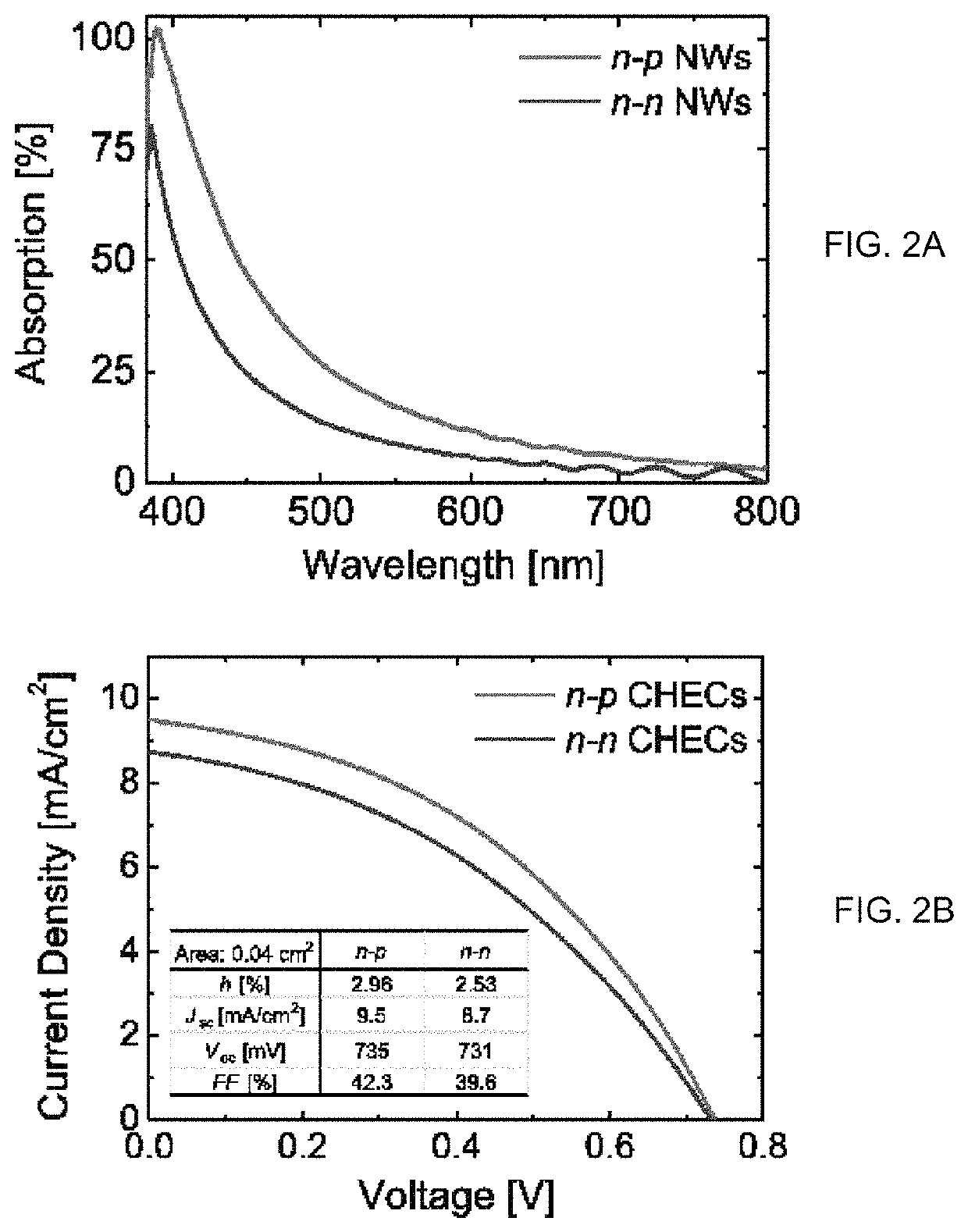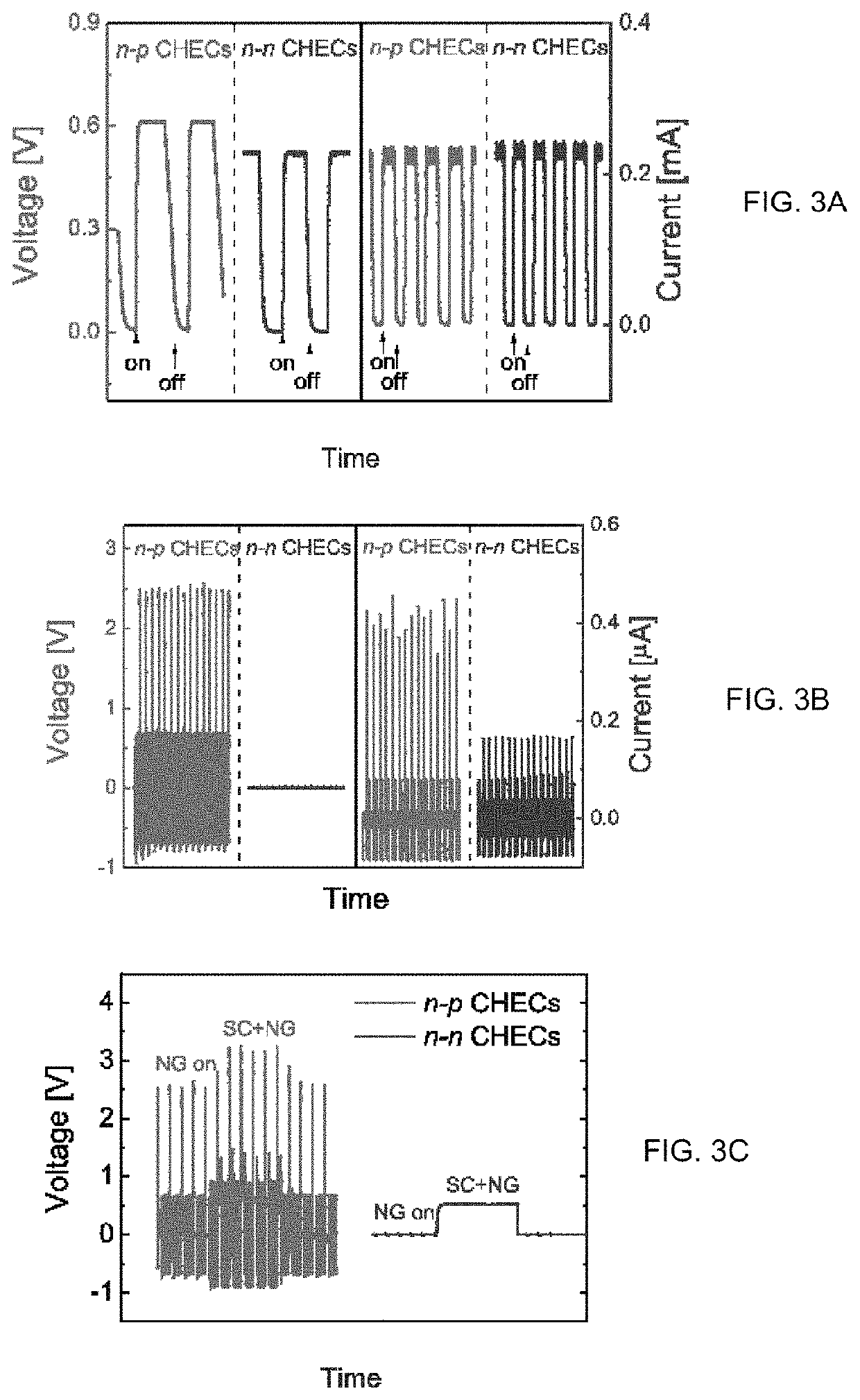Cascade-type hybrid energy cell
a hybrid energy cell and cascade-type technology, applied in the field of cascade-type hybrid energy cells, can solve the problems of significant solar energy, greater non-radiative recombination across, and undercutting these advantages, so as to improve the piezoelectric voltage output of the checs, effective combined energy harvesting, and the effect of strong voltage drop
- Summary
- Abstract
- Description
- Claims
- Application Information
AI Technical Summary
Benefits of technology
Problems solved by technology
Method used
Image
Examples
Embodiment Construction
[0048]The present invention relates to a cascade-type hybrid solar and piezoelectric (and / or triboelectric, and / or thermoelectric) nanogenerator comprising a laminate structure having the following elements: (a) a substrate; (b) an electrically insulating buffer layer; (c) a first electrode element; (d) a piezoelectric (and / or triboelectric, and / or thermoelectric) element configured to convert mechanic (and / or thermal) energy to electrical energy; and (e) a solar cell element configured to convert optical energy to electrical energy; and (f) a second electrode element; wherein the nanogenerator further comprises an encapsulation element that encapsulates the laminate structure.
[0049]Preferred embodiments of this cascade-type hybrid solar and piezoelectric (and / or triboelectric, and / or thermoelectric) nanogenerator may include any one or a combination of any two or more of any of the following features:[0050]the substrate is a polymer;[0051]the substrate is a non-polymeric material;[...
PUM
| Property | Measurement | Unit |
|---|---|---|
| temperature | aaaaa | aaaaa |
| voltage | aaaaa | aaaaa |
| frequency | aaaaa | aaaaa |
Abstract
Description
Claims
Application Information
 Login to View More
Login to View More - R&D
- Intellectual Property
- Life Sciences
- Materials
- Tech Scout
- Unparalleled Data Quality
- Higher Quality Content
- 60% Fewer Hallucinations
Browse by: Latest US Patents, China's latest patents, Technical Efficacy Thesaurus, Application Domain, Technology Topic, Popular Technical Reports.
© 2025 PatSnap. All rights reserved.Legal|Privacy policy|Modern Slavery Act Transparency Statement|Sitemap|About US| Contact US: help@patsnap.com



